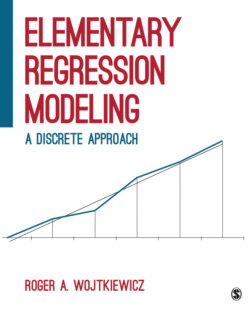Читать книгу Elementary Regression Modeling - Roger A. Wojtkiewicz - Страница 13
На сайте Литреса книга снята с продажи.
Modeling Linearity with Splines
ОглавлениеThe first regression model that students usually learn about is one with an interval-level independent variable and an interval-dependent variable. In this book, we carefully consider models like this that involve only interval variables.
However, from the very start in this book, we consider the key assumption in a model that includes an interval independent variable and an interval dependent variable. This assumption is that the relationship between the variables is linear. By linear we mean that as the independent variable increases by one additional unit, the dependent variable increases/decreases by a consistent amount.
Another way to think about the linearity assumption is to view the assumption as a constraint on the regression model. This implies that there is a less constrained model than the linear model and that the less constrained model lessens or perhaps does not involve a linear assumption. In this book, we use spline variables to model linearity. Spline variables involve basically taking the interval variable and breaking it into parts. We can then consider the relationship of each part to the dependent variable. It may be that each part has the same linear relationship with the dependent variable. However, it may not be that each part has the same linear relationship. Spline variables provide an accessible method for assessing whether a linear relationship is present.
The relationship between an interval variable and a dependent variable that measures the log odds of being in one category as opposed to another can also be expressed as a linear coefficient. In this book, I also use spline variables to examine linearity in logistic regression models.
